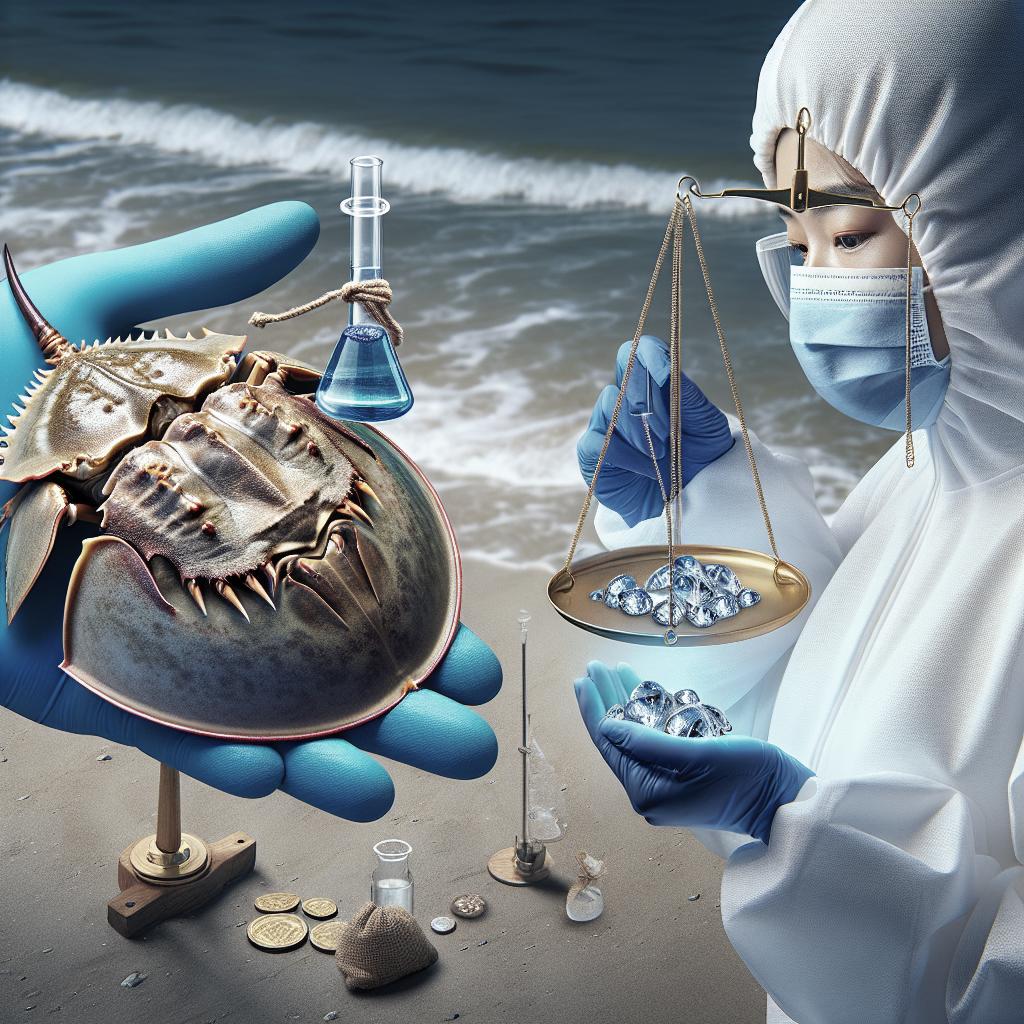Horseshoe crab blood holds an almost mythical status in the biomedical world, valued for its unique properties capable of detecting bacterial contamination in medical equipment and vaccines. This blog post will delve into the science behind why this blue blood is so valuable, the process through which it is harvested, and the ethical questions surrounding its procurement. By examining various aspects such as its uses in the medical field, the growing demand, and the efforts to develop synthetic alternatives, we’ll paint a comprehensive picture of this fascinating subject.
Morning Edition
Imagine this headline over your morning cup of coffee: “Horseshoe Crab Blood’s Liquid Gold Status.” It may seem far-fetched at first, but horseshoe crab blood is worth thousands of dollars per quart, making it one of the most expensive liquids in the world. Biomedical companies highly prize this blood for a unique component called Limulus Amebocyte Lysate (LAL).
LAL is critical for testing medical devices, vaccines, and more. The naturally blue blood contains compounds that coagulate around bacterial endotoxins, making it invaluable for ensuring sterilization and safety. This discovery has driven a quiet but substantial demand in industries from pharmaceutical companies to research institutions.
It looks a bit like a scene from a sci-fi movie.
Picture a laboratory filled with tanks and surgical equipment, with horseshoe crabs clamped in position while blood is extracted from them. Their cobalt-blue blood slowly fills up collection vessels, looking eerily otherworldly under the fluorescent lights. This scene, bearing a striking resemblance to a sci-fi movie, is a reality in several biomedical facilities.
After the blood extraction, the crabs are usually returned to the wild, although there’s ongoing debate about their survival rates post-extraction. The whole process has an air of urgency and meticulous precision, emphasizing just how critical and rare this resource is. Although the image might be unsettling, it underscores the pivotal role horseshoe crab blood plays in modern medicine.
The horseshoe crabs have been harvested for use as bait and medicine from Florida to Maine over the years, though the largest harvests are in Maryland, Delaware, Massachusetts and Virginia.
The harvesting of horseshoe crabs spans various coastal states, but the largest operations are centralized in Maryland, Delaware, Massachusetts, and Virginia. Traditionally, these crabs were caught primarily for fishing bait. However, the focus shifted largely towards the biomedical sector once the value of their blood was uncovered.
Several regulatory guidelines govern the harvesting practice to ensure that horseshoe crab populations remain sustainable. The Atlantic States Marine Fisheries Commission, for instance, imposes quotas and seasonal restrictions. The concentrated activity in these states plays a crucial role in balancing economic gains and conservation efforts, reflecting a complex but essential relationship between nature and science.
Conversation
The ethics of harvesting horseshoe crab blood instigate varied opinions. Environmentalists argue for stricter conservation laws due to concerns about declining crab populations, while proponents in the biomedical field emphasize the irreplaceable value of LAL in ensuring human health. This dichotomy creates a narrative filled with tension and collaboration.
There’s also emerging discourse around synthetic alternatives like recombinant Factor C (rFC). Despite being effective, widespread adoption has been slow due to regulatory and cost-related barriers. These conversations reflect not only a crossroads in biomedical innovation but also a collectively shared responsibility towards nature.
Most viewed
Posts about horseshoe crab blood often trend due to the fascinating blend of science, economics, and ethical considerations. Readers are captivated by the seemingly “sci-fi” nature of this endeavor and the staggering prices that transform these unassuming marine creatures into biotechnological gold mines.
Articles discussing the intersection of biotechnology and environmentalism, particularly those that explore innovative solutions to reduce reliance on natural resources, also attract substantial attention. These topics resonate deeply with an audience increasingly aware of sustainable practices and the future of medical advancements.
Summary of main points
| Subheadings | Content |
|---|---|
| Morning Edition | Horseshoe crab blood’s high value, primarily due to unique properties that benefit the biomedical sector. |
| It looks a bit like a scene from a sci-fi movie | Description of the blood extraction process and its eerie, sci-fi-esque appearance. |
| Harvesting regions and practices | Details about where and how horseshoe crabs are harvested, emphasizing focused states and regulatory guidelines. |
| Conversation | Discussion on ethical concerns and the debate between natural harvesting versus synthetic alternatives. |
| Most viewed | Popularity of articles on this topic, focusing on the intriguing and multifaceted nature of the subject matter. |


